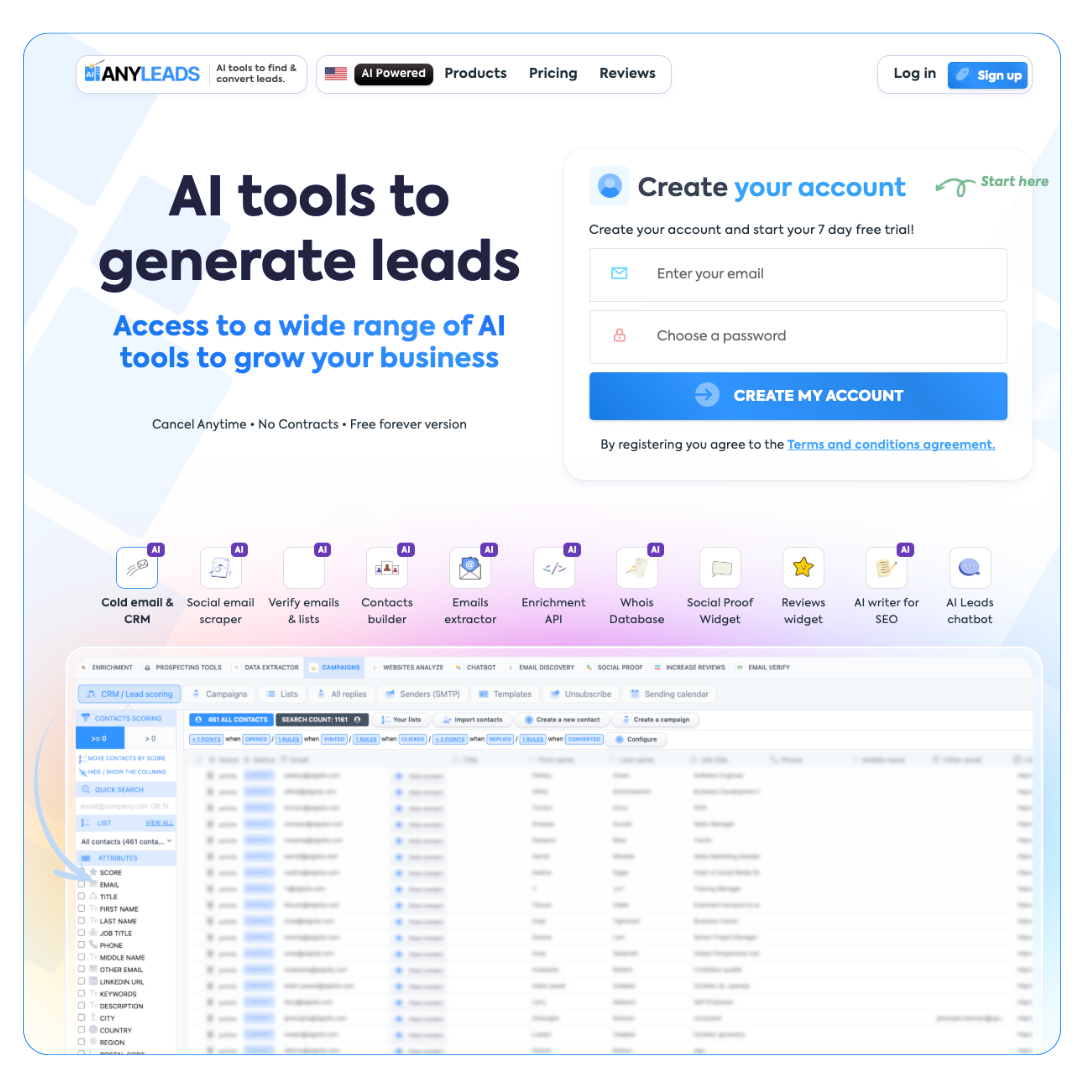 LIMITED SPOTS
All plans are 30% OFF for the first month! with the code WELCOME303
LIMITED SPOTS
All plans are 30% OFF for the first month! with the code WELCOME303

 LIMITED SPOTS
All plans are 30% OFF for the first month! with the code WELCOME303
LIMITED SPOTS
All plans are 30% OFF for the first month! with the code WELCOME303


If you’ve ever watched a sales team scramble through a cluttered spreadsheet to find a lead from last week, you already know that lead-generation workflows can be a nightmare. They're bloated, slow, and full of cracks for good leads to fall through.
And when marketing blames sales and sales blames ops—well, nobody wins.
But automation is changing the rhythm. Not with some magic “fix-everything” button, but by quietly reorganizing the way work flows behind the scenes. The lead shows up, gets sorted, scored, routed, and followed up on—without the human fumble.
This isn’t about replacing people.
It’s about freeing them up to focus on what they actually do best. And when it’s done right? The entire system feels less like a tangled hose and more like a working faucet. Let’s unpack how that’s happening and what it really takes to make automation worth the hype.
Let’s rewind a decade. Generating leads meant buying lists, cold calling, and blasting emails to anyone who'd listen. The process was mostly manual and pretty miserable. Leads were often passed between teams with a vague shrug and a prayer.
Then automation tools arrived, offering a lifeline.
Suddenly, email follow-ups could be triggered by behavior, leads could be scored in real-time, and data didn’t have to be manually input five times before it reached a sales rep. Many professionals started upskilling through programs like an AI Marketing Course to better navigate this tech-driven shift. According to Salesforce’s “State of Marketing” report, high performers are 4.2 times more likely to use marketing analytics and other advanced tools compared to underperformers.
The result? More leads, better leads, and fewer dropped balls. But the bigger shift wasn’t just about lead generation—it was how these tools started to rewire internal operations.
Once automation enters the chat, it forces you to rethink how teams interact. It highlights inefficiencies you didn’t even know you had. And when that’s handled well, the lead pipeline stops feeling like a mystery and starts working like a system.
So, what actually changes when you introduce automation into your lead generation process?
It’s not just about fewer manual tasks. It’s about clarity, consistency, and collaboration across departments. It redefines roles, smooths communication, and gets everyone on the same page.
Let’s dig into how that looks in the real world.
In a non-automated system, leads trickle in through website forms, ad campaigns, and live chat, and then someone has to triage them manually.
That person is usually overworked and overwhelmed.
Automation flips the script. Lead forms feed directly into CRMs. Chatbots qualify in real-time. Leads get routed based on rules: geography, industry, account size, and even rep availability. No one touches anything, yet everything moves.
And speed matters—a study by Harvard Business Review found that companies that respond within an hour are 7x more likely to qualify a lead than those who wait.
This is where automation really starts to change the culture. When your workflows are automated, communication naturally becomes more structured. One of the biggest challenges we see in agencies is managing website feedback through scattered email chains or messages. With Feedbucket, feedback is captured visually, right on the site, and routed directly into tools like Asana or ClickUp. That automation turns chaotic back-and-forth into a structured, trackable workflow that keeps every stakeholder aligned without extra meetings or manual task creation.
No more "Did you see that lead from the webinar?" or "Can someone follow up with this guy?" Everyone sees the same data, in the same system, in real-time.
To make this work, though, you need more than tools—you need to build a strong internal communication strategy that supports automated workflows. As Blink points out, alignment between departments requires more than just a Slack channel. It’s about transparency, shared goals, and communication channels that reflect the way your teams actually work.
Let’s be honest—sales reps don’t want a long list of “maybe leads.” They want the top five that are ready to buy. Automation helps with that. It tracks digital behavior (opens, clicks, time spent on site) and assigns a score accordingly.
The result? Your reps focus on high-potential leads first, without guessing. It’s smarter, faster, and surprisingly personal. When done right, it feels less like a system and more like intuition.
You can’t improve what you can’t measure. Automation gives teams access to reliable data, consistently collected and clearly organized.
Want to know which ad campaigns are driving SQLs? Or which rep is converting leads the fastest? It’s all there. Real-time dashboards. Shared reports. No more digging through emails or spreadsheets. Just clean data that helps teams make better calls—faster.
It doesn’t just support smarter marketing. It creates accountability and insight across the board.


Here’s the thing about automation: it’s not just about speed. It’s about flow.
It helps teams get in sync, eliminate unnecessary busy work, and focus on the work that actually moves the needle. But it only works when people understand it, trust it, and know how to work with it, not around it.
If you’re thinking about automating your lead gen workflows, don’t just install tools. Rethink how your teams work together. Because when the internal gears are aligned, the whole machine runs smoother.
And really, isn’t that what everyone’s chasing? Less mess. More momentum. Leads that don’t just come in, but actually go somewhere.